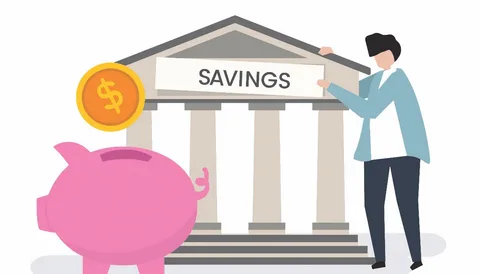“Do not save what is left after spending, but spend what is left after saving.” – Warren Buffett
What Are The Best High-Yield Savings Accounts In 2025?: In an era of volatile markets and economic uncertainty, high-yield savings accounts (HYSAs) have emerged as a smart way to grow your idle funds with low risk and liquidity. With rising interest rates and increasing competition among banks, 2025 offers a wide array of high-yield savings options worth considering.
This guide explores the best high-yield savings accounts in 2025, tips to maximize returns, and how they compare with other secure instruments like Fixed Deposits (FDs).
Why Choose A High-Yield Savings Account In 2025?
A high-yield savings account is a type of savings account that offers interest rates significantly higher than traditional savings accounts, often provided by digital or private banks. These accounts help beat inflation and allow your money to grow passively.
According to Paisabazaar, leading banks in India offer interest rates as high as 7.00% per annum on savings balances above ₹5 lakh in 2025.
Here are a few examples of high-yield accounts currently available:
- IDFC FIRST Bank offers up to 7.00% p.a. for balances above ₹10 lakh (IDFC First Bank).
- Ujjivan Small Finance Bank also offers competitive rates with flexible balance slabs (Ujjivan SFB).
- AU Small Finance Bank and Equitas Small Finance Bank frequently offer interest between 6.50% – 7.50% p.a.
How To Maximize Returns With HYSAs?

While HYSAs offer great potential, maximizing returns involves more than just picking the highest rate. Consider the following:
1. Compare Across Banks
Use comparison platforms like BankBazaar and Investopedia to evaluate not just interest rates, but also:
- Minimum balance requirements
- Interest calculation methods
- Withdrawal limits
2. Leverage Compounding
Choose banks that compound interest monthly or quarterly. Compounded interest ensures your earnings generate their own earnings.
3. Maintain Optimal Balance
Banks often offer tiered interest rates. For instance, as per IDFC FIRST Bank, balances between ₹2 lakh to ₹10 lakh earn 6.75%, while higher slabs get 7.00%. Keeping your balance within these thresholds helps you earn more.
High-Yield Savings Vs Fixed Deposits
While Fixed Deposits (FDs) are another popular choice for secure earnings, HYSAs offer more liquidity and flexibility.
| Feature | High-Yield Savings | Fixed Deposit (FD) |
| Interest Rate | Up to 7.50% | Up to 8.25% |
| Liquidity | High (can withdraw anytime) | Low (penalty on early withdrawal) |
| Lock-in Period | None | 7 days to 10 years |
| Flexibility | High | Moderate |
| Ideal For | Emergency funds, regular savings | Long-term goals |
(Source: BankBazaar FD Rates)
Final Thoughts
If you’re looking to safely grow your savings in 2025, high-yield savings accounts offer a compelling alternative to traditional savings accounts or even some FDs. By choosing the right bank and managing your balance strategically, you can earn significantly higher returns without compromising on liquidity.
FAQ
What Is Considered A Good High-Yield Savings Rate In 2025?
Anything above 6.5% p.a. is considered competitive in 2025.
Are High-Yield Savings Accounts Safe?
Yes, if offered by RBI-regulated banks, they are insured and safe.
Can I Open Multiple High-Yield Savings Accounts?
Yes, but managing multiple accounts can dilute your average interest and complicate tracking.
How Often Is Interest Paid On HYSAs?
Most banks pay monthly or quarterly interest, which is either credited or compounded.
What Is The Minimum Balance Requirement?
It varies by bank. For instance, IDFC FIRST Bank requires ₹10,000, while some digital banks offer zero-balance accounts.
Are HYSAs Better Than FDs?
They’re better for short-term liquidity needs, while FDs are ideal for longer-term locking of funds at a fixed rate.
Can NRI Accounts Avail High-Yield Savings Benefits?
Yes, many banks offer NRO/NRE savings accounts with similar high interest rates.

